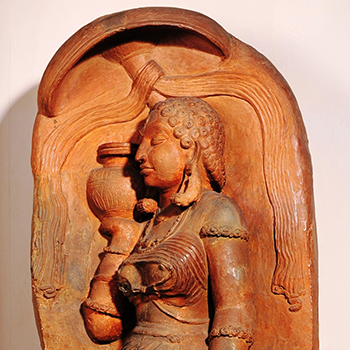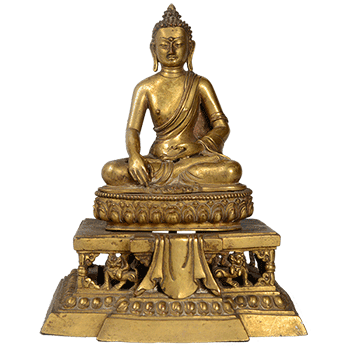This beautiful sculpture is made of red sandstone. Originally, it functioned as a decorative beam at Bharhut, Madhya Pradesh and is currently at the Maurya and Shunga Gallery at the National Museum, New Delhi. It belongs to the Shunga dynasty, tracing it back to 2 BCE.
































